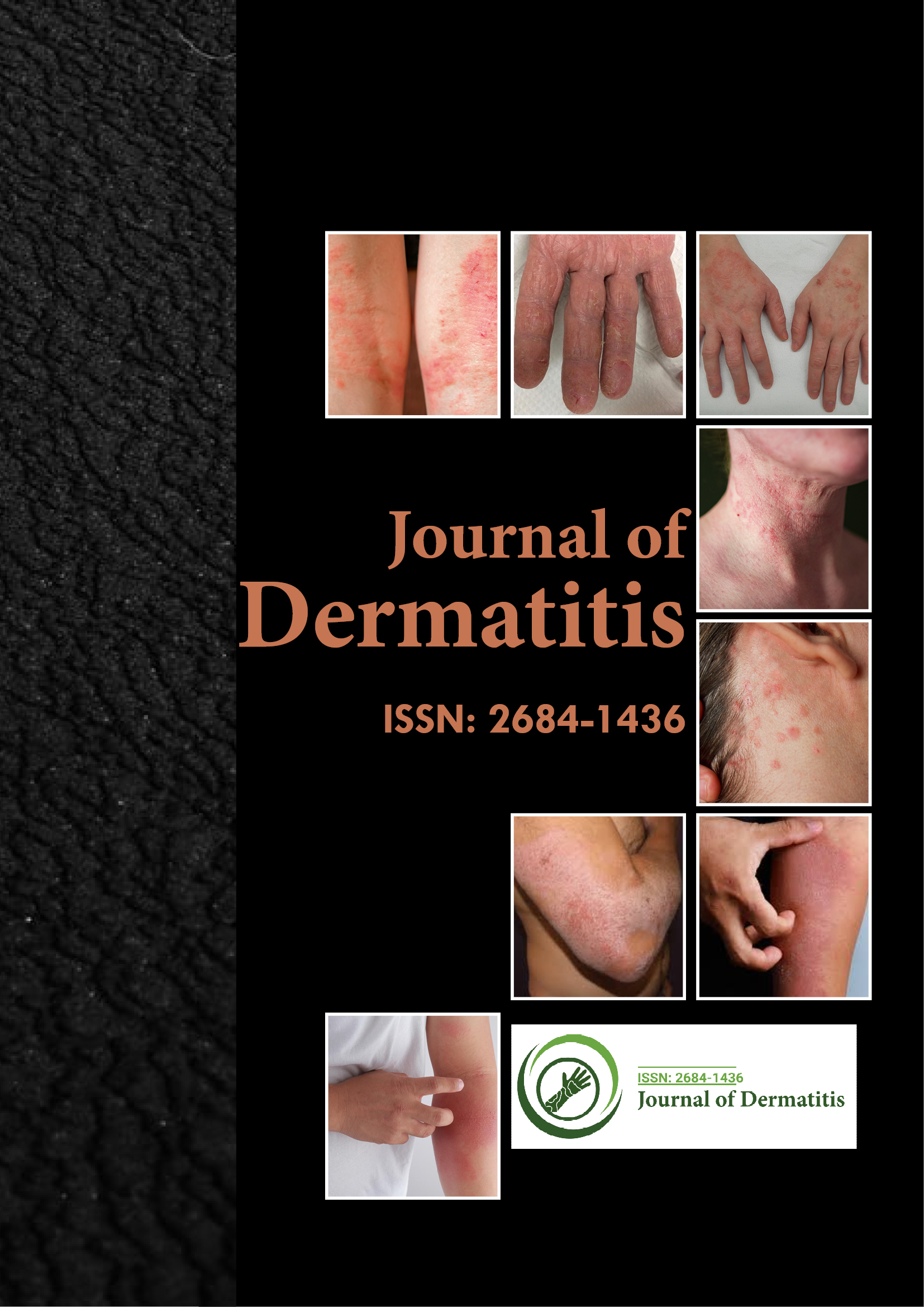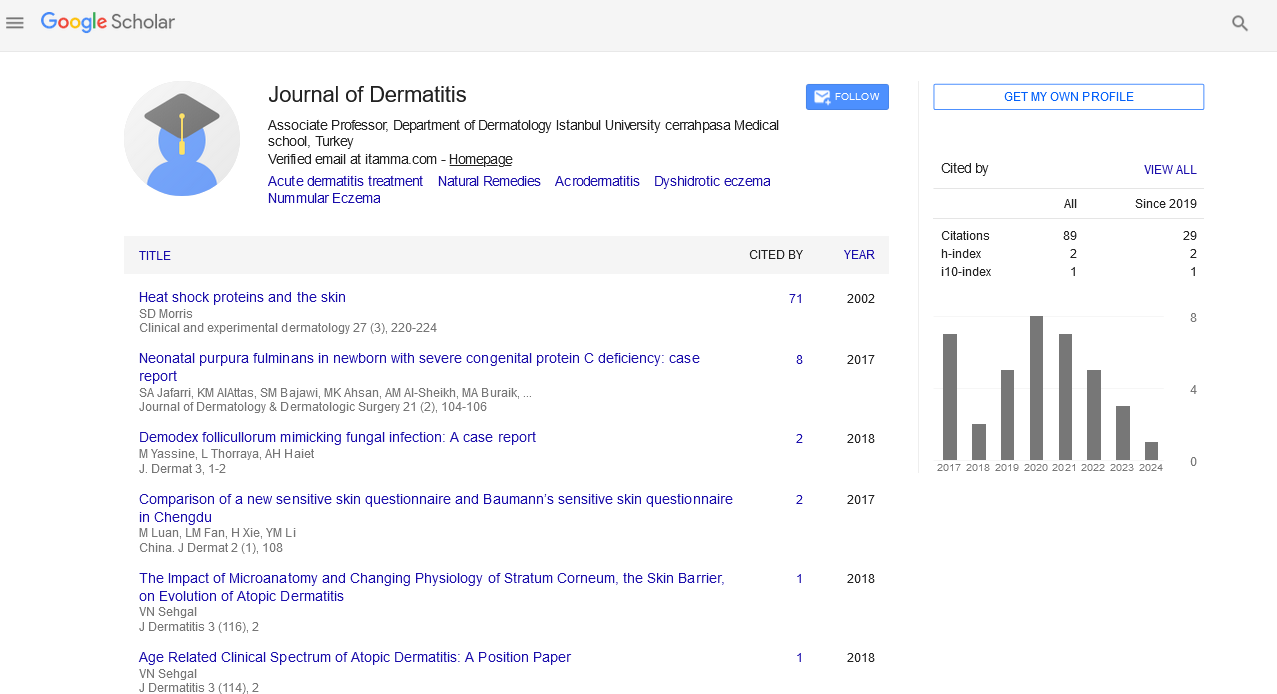Indexed In
- RefSeek
- Hamdard University
- EBSCO A-Z
- Euro Pub
- Google Scholar
Useful Links
Share This Page
Journal Flyer

Open Access Journals
- Agri and Aquaculture
- Biochemistry
- Bioinformatics & Systems Biology
- Business & Management
- Chemistry
- Clinical Sciences
- Engineering
- Food & Nutrition
- General Science
- Genetics & Molecular Biology
- Immunology & Microbiology
- Medical Sciences
- Neuroscience & Psychology
- Nursing & Health Care
- Pharmaceutical Sciences
Perspective - (2023) Volume 8, Issue 6
Regulation of Endothelial Cells in Skin Transplantation and their Techniques
Sheila Hon*Received: 17-Aug-2023, Manuscript No. JOD-23-23551; Editor assigned: 21-Aug-2023, Pre QC No. JOD-23-23551 (PQ); Reviewed: 04-Sep-2023, QC No. JOD-23-23551; Revised: 11-Sep-2023, Manuscript No. JOD-23-23551 (R); Published: 19-Sep-2023, DOI: 10.35248/2684-1436.23.8.220
Description
Skin transplantation is a vital medical procedure used to treat various conditions such as burns, chronic wounds, and skin diseases. It involves the transfer of healthy skin tissue, known as a graft, from one part of the body or a donor to a recipient site that requires repair. An essential aspect of successful skin transplantation is the regulation of endothelial cells, which play a significant role in the graft's integration and long-term survival. This article delves into the regulation of endothelial cells in skin transplantation and the techniques used to enhance graft viability.
The role of endothelial cells in skin transplantation
Endothelial cells are a fundamental component of the body's blood vessels, and they form the inner lining known as the endothelium. In the context of skin transplantation, these cells are found in the small blood vessels, or capillaries, throughout the skin. Their role is vital for the following reasons:
Angiogenesis: Endothelial cells are responsible for angiogenesis, the process of forming new blood vessels. In skin transplantation, the graft needs a functional vascular network to supply it with oxygen and nutrients, allowing it to integrate with the recipient site successfully.
Immunological regulation: Endothelial cells participate in regulating the immune response. In the context of skin transplantation, they can either promote immune tolerance, allowing the graft to survive, or trigger an immune rejection response.
Barrier function: The endothelium acts as a barrier, controlling the passage of immune cells and molecules between the blood and the surrounding tissue. This barrier function is vital in preventing immune reactions that could lead to graft rejection.
Techniques for regulating endothelial cells in skin transplantation
Immunosuppressive medications: To regulate endothelial cells in skin transplantation, physicians often prescribe immunosuppressive medications. These drugs suppress the recipient's immune system to prevent it from attacking the graft. Common immunosuppressive drugs include corticosteroids, calcineurin inhibitors, and mTOR inhibitors. These medications help in maintaining graft viability by reducing immune-mediated damage to endothelial cells.
Endothelial cell activation: In some cases, endothelial cells can be activated to promote angiogenesis and enhance graft integration. Growth factors like Vascular Endothelial Growth Factor (VEGF) are applied to stimulate the proliferation of endothelial cells, leading to the formation of new blood vessels within the graft.
Preoperative vascular assessment: Before performing skin transplantation, surgeons often conduct a thorough preoperative vascular assessment of both the graft and the recipient site. This assessment helps identify any pre-existing vascular conditions that could affect graft survival. It also guides the surgical approach to ensure a sufficient blood supply to the graft.
Composite graft techniques: In complex cases, composite grafts, which include skin and underlying tissues, can be used to ensure better vascular support. These grafts are particularly beneficial for areas with poor blood supply, such as the face. By incorporating more extensive vascular networks, composite grafts enhance the chances of graft survival.
Skin substitutes: Skin substitutes are engineered materials designed to promote the integration of skin grafts. They often contain endothelial cell-supportive components, like collagen, hyaluronic acid, and growth factors. Skin substitutes provide a scaffold for the graft and encourage the regeneration of the recipient's own endothelial cells.
In conclusion, the regulation of endothelial cells is a critical factor in the success of skin transplantation. These cells play a vital role in angiogenesis, immunological regulation, and maintaining the barrier function between the graft and the recipient's immune system. Various techniques, including immunosuppressive medications, growth factors, preoperative assessments, and innovative graft approaches, are employed to ensure the optimal function of endothelial cells and enhance graft survival. Advancements in this field continue to improve the outcomes of skin transplantation, benefiting patients in need of reconstructive and therapeutic procedures.
Citation: Hon S (2023) Regulation of Endothelial Cells in Skin Transplantation and their Techniques. J Dermatitis. 8:220.
Copyright: © 2023 Hon S. This is an open-access article distributed under the terms of the Creative Commons Attribution License, which permits unrestricted use, distribution, and reproduction in any medium, provided the original author and source are credited.

